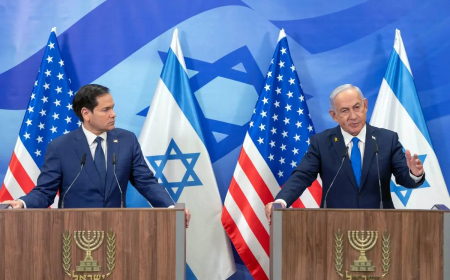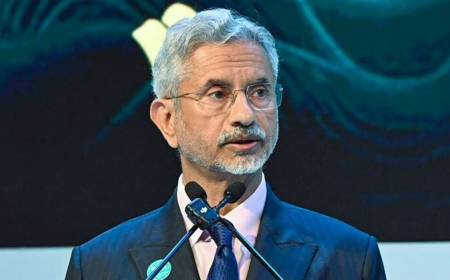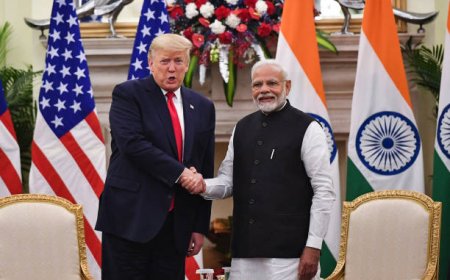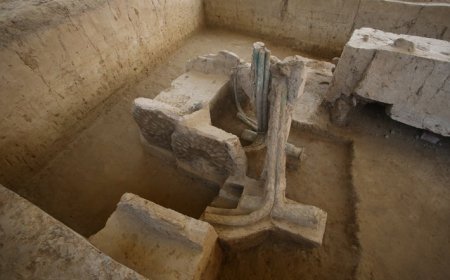Persian Gulf Power Play: Iran's Mysterious 'Shahid Bagheri' Vessel Uncovered by Satellite Imagery
Satellite images reveal Iran's latest naval asset, the 'Shahid Bagheri', a dedicated drone ship, in the Persian Gulf. | Expert insights into Tehran's strategic maritime expansion.
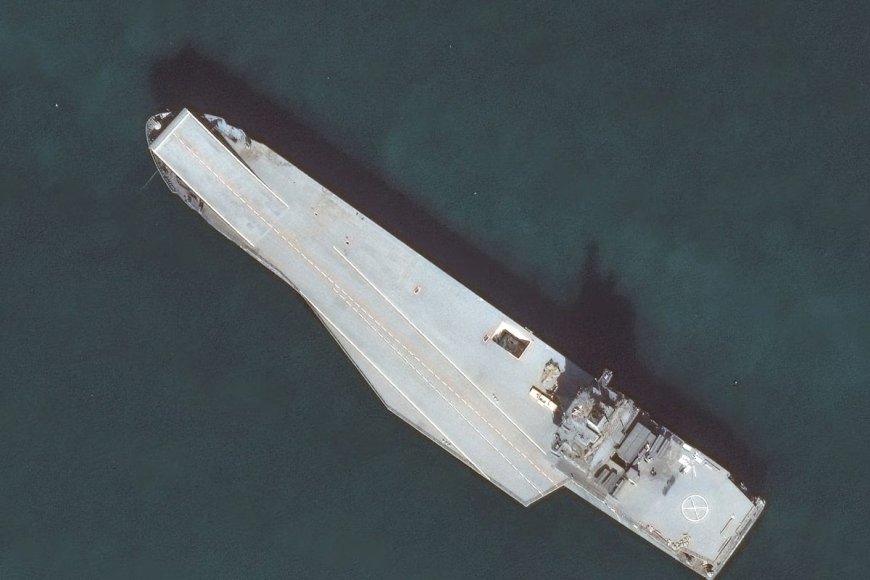
Recent satellite images have shed light on Iran's newest addition to its naval arsenal: the 'Shahid Bagheri', a bespoke drone ship designed to bolster the country's maritime surveillance and strike capabilities in the strategically vital Persian Gulf. This development underscores Tehran's persistent efforts to modernize its military, particularly in the realm of unmanned aerial vehicles (UAVs), and to project power within its immediate regional sphere.
Located in the Persian Gulf, the 'Shahid Bagheri' has been observed in satellite imagery, offering a rare glimpse into Iran's naval ambitions. Experts suggest that this vessel is specifically tailored to support and deploy UAVs, significantly enhancing Iran's ability to monitor and respond to maritime threats across the Gulf. The ship's design and operational capabilities are seen as a direct response to the evolving security landscape in the region, where the presence of U.S. and allied naval forces has long been a point of contention for Tehran.
The emergence of the 'Shahid Bagheri' drone ship is indicative of Iran's broader strategy to leverage asymmetric warfare capabilities, including UAVs, to counter the conventional military superiority of its adversaries. By developing such specialized naval assets, Iran aims to deter potential aggressors and safeguard its sovereignty, particularly in the face of heightened tensions with Western powers over issues like nuclear proliferation and regional influence.
Analysts point out that the deployment of the 'Shahid Bagheri' in the Persian Gulf also highlights Iran's intent to assert dominance over its territorial waters and the Strait of Hormuz, a critical chokepoint for global oil shipments. This move is likely to be met with scrutiny by neighboring countries and international stakeholders, given the potential implications for maritime security and the free flow of trade in the region.
As Iran continues to invest in its naval modernization program, the 'Shahid Bagheri' represents a notable milestone in the country's pursuit of self-sufficiency in defense manufacturing and its desire to play a more assertive role in regional affairs. The international community will undoubtedly be watching closely for signs of how this new capability will be integrated into Iran's overall military doctrine and how it might influence the delicate balance of power in the Middle East.
The unveiling of the 'Shahid Bagheri' via satellite imagery serves as a poignant reminder of the pivotal role that open-source intelligence (OSINT) plays in uncovering and analyzing military developments worldwide. As the global community seeks to understand the implications of Iran's latest naval asset, one thing is clear: the 'Shahid Bagheri' is poised to become a significant factor in the geopolitical equations of the Persian Gulf and beyond.


